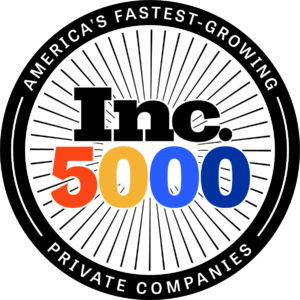Did you know that a majority of millionaires in the US obtained their wealth through real estate? Because of the ability to provide regular income, favorable tax policies, and appreciation, real estate investing, particularly in commercial properties, is an amazing way to produce wealth. In fact, it is a far superior avenue to creating wealth than other traditional investments. Here’s why.
Control Over Your Investments
When investing in stocks, you are not in control of your investments. You have no say in how a corporation operates, how they manage their finances, or how they respond to consumer demand. However, with commercial real estate, you have complete control over leverage and tax strategies.
Let’s look at an example.
You buy a 20-unit multifamily apartment complex selling for $1 million dollars. You invest $200,000 and borrow $800,000 at 4% over 30 years. The building has an 8% cap rate providing you a net operating income of $80,000 per year (Purchase price x cap rate = net operating income).
Your mortgage payments with principal and interest equal $45,832, leaving you with $34,168 in cash flow (NOI – Mortgage Payments = Cash Flow).
You had the ability to control your leverage to bring in a pretax cash return of 17%. However, your control does not end here. You still have the ability to control your tax strategy.
Instead of paying taxes on the full $34,168, you can use tax strategies to reduce your taxable income. Despite borrowing 80%, you are allowed to benefit from the full $1 million in tax depreciation benefits. Although each tax situation is different, you can count on reducing your taxes significantly through this strategy.
Cost Segregation Studies
Another way to influence wealth is through cost segregation studies that reclassify assets to shorten depreciation times. This will reduce your tax obligations even further. Although the idea of cost segregation is enough for a small seminar, here are some numbers to help you understand how a cost segregation study can save you money.
Using the same example from above:
- $31,468 in cash flow PLUS $14,099 in the principal portion of your mortgage payment.
- Prior to cost segregation, you can subtract $29,090 in depreciation leading to a taxable gain of $19,166. At a 35% tax rate, your taxes on $31,468 would be $6708.
- After cost segregation, you gain an additional $10,000 in depreciation, leading to a taxable gain of $9,166. At a 35% tax rate, your taxes on $31,468 would be $3208, improving your cash on cash return to 15.4%.
Leveraging Amortization
When you borrow money, amortization is part of the deal. However, when you buy property using other people’s money, you can use the amortization to create wealth because someone else will be paying off the mortgage through monthly rents.
Looking again at the multifamily apartment complex, the first year of payments equals a $14,000 reduction in the principal owed. Even if the property value remains the same, you have increased your equity by $14,000 and someone else footed the bill. When you add this amount, your return on investment has now increased to 22.4%.
Increasing Wealth Through Management
The value of commercial properties comes through generated income rather than the structure and land. Those wishing to increase their wealth often choose commercial real estate because they can control the income produced through proper property management.
As a commercial property owner, you have the ability to control both expenses and generated income. You can:
- Raise rents
- Shift costs to tenants
- Create additional revenue generators on the property
- Add value through upgrades
- Cut costs
- Reduce tenant turnover
- And more
Each action will increase the value of the property, adding to your return on investment. Let’s look again at our example.
The past owner did not keep up with market rates for rents, charging only $850 per month as opposed to the $900 found throughout the area. You choose to increase the rents by $25, still below market rate to reduce tenant turnover. This increases your bottom line by $5700.
Then, you reduce vendor costs. You are able to save $180/year on dumpster fees and $1,000 per year in lawn maintenance, as well as reduce the property management fee from 8% to 7% saving an additional $1600.
Between the increases in income and the reduced expenses, your total gain is $8,840. Additionally, since your property value is based on generated income, you also raise the value of the property to $1,106,000.
What’s the Catch?
With the new income, you will be responsible for an additional $2.968 in taxes. However, you also have a new after-tax cash flow of $36,472 plus $106,000 in forced appreciation, and $14,000 in amortization bringing your return to 78%.
You may be thinking there is no way for this to be true. Certainly, there is a catch. The catch is taxes, but it doesn’t have to be a catch.
- As long as you own the property, you can continue to withdraw the equity using cash-out refinance loans. The money you receive is not taxable.
- You can put the property in a trust to reduce taxes
- You can sell the property using a 1031 Exchange to defer taxes
Because of your ability to control your assets as well as take advantage of tax strategies, commercial real estate investing is the best way to produce wealth.





